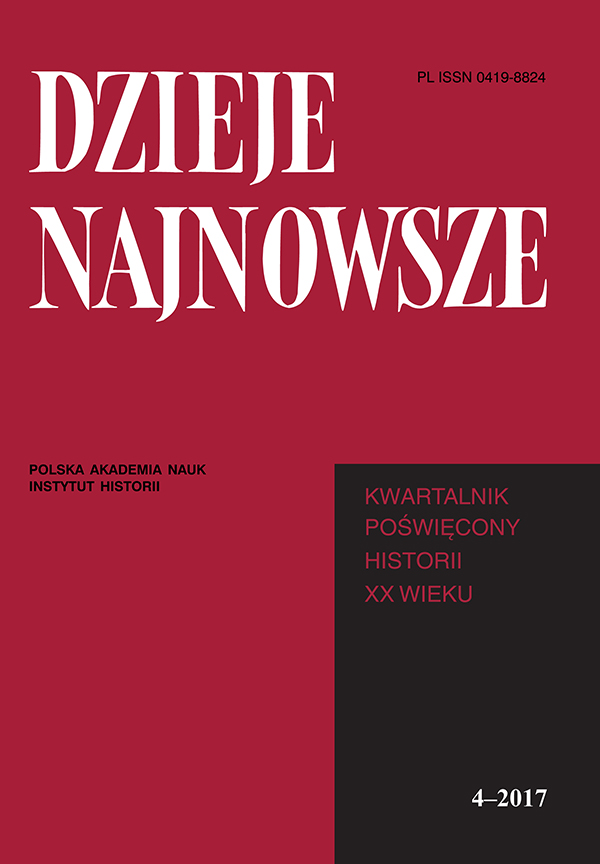Władze wojskowe, cywilne i kościelne a problem cerkwi prawosławnych w II Rzeczypospolitej – studium na przykładzie świątyń Suwałk, Łomży i Augustowa
Civil, military and Church authorities and problem of Orthodox churches in the Second Polish Republic – a study illustrated with an example of churches at Suwałki, Łomża and Augustów
Author(s): Piotr ZubowskiSubject(s): Cultural history, Political history, Recent History (1900 till today), Interwar Period (1920 - 1939)
Published by: Instytut Historii im. Tadeusza Manteuffla Polskiej Akademii Nauk
Keywords: Suwałki;Łomża;Augustów;Second Polish Republic;religious minorities in Polnad;Orthodox Church in Poland
Summary/Abstract: This article describes in great detail the situation of Orthodox Church buildings at Suwałki, Łomża and Augustów, in the interwar period, in the realities of independent Poland. The main purpose was to describe the policy of military, civil (central and self-government) and Church authorities (Roman Catholic and Orthodox) in this respect. Certain patterns of how authorities dealt with the Orthodox heritage characteristic not only of three selected towns, but of the whole Kingdom of Poland are described. The specificity of churches was connected with its founder, group of the faithful that used them their and privileged location in the urban space. Apart from some exceptions (Greek Catholic churches, Edinoverie churches), they were built from the 1830s by the Tsarist authorities for Russian officials and army. For this reason Polish population regarded them with hostility and equated with Russification policy. As a result, after 1915, when Russian administrative apparatus and soldiers left the Kingdom of Poland, Orthodox churches were converted into Catholic churches for Polish soldiers and Polish civil population. After fulfilling religious needs of these two groups, remaining Orthodox Church buildings were demolished or converted into secular objects. Due to a rapid decline in Orthodox population and restrictive policy of the Polish authorities there was only one new parish created in the area (two Orthodox churches were given to Orthodox soldiers). Claims of the Orthodox hierarchy for return or compensation were marginalized.
Journal: Dzieje Najnowsze
- Issue Year: 49/2017
- Issue No: 4
- Page Range: 135-163
- Page Count: 29
- Language: Polish

